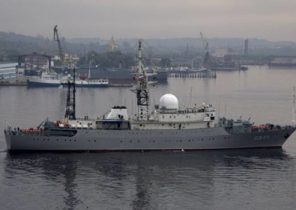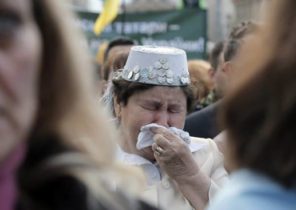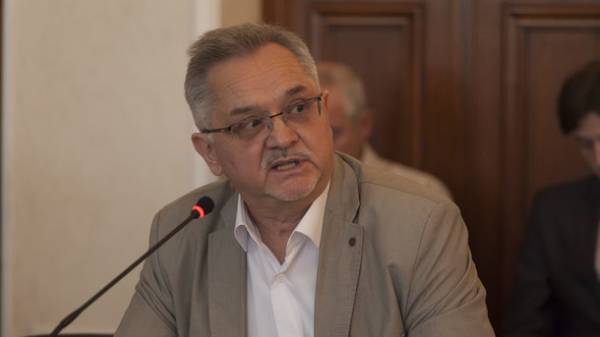
According to experts, already by mid-2018 year, Ukraine may be on the verge of default. The start of the budget process and preparation for the next presidential and parliamentary elections in 2019 will lower the possibility of obtaining new loans from international financial institutions reluctant to Finance countries in which there are complex electoral processes. To this in 2019 will be added and the beginning of payments on external debts. If in 2017 Ukraine has to return $2.6 billion, in 2017-2018, the amount exceeds $8 billion, the largest volume of payments was in 2019 – nearly $8 billion.
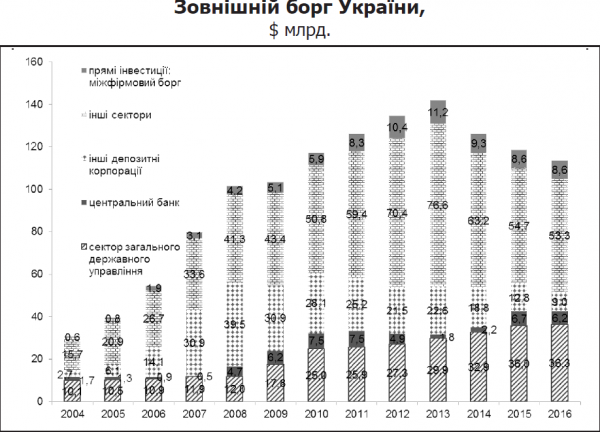
To survive these crisis years, according to Executive Director of the International Fund blazer Oleg Ustenko, Ukraine needs to enlist the support of investors and try to “pump” in the country a minimum of $5-7 billion annually. But for this it is necessary to improve the quality of the business climate, because last year in Ukraine it’s only $3.4 billion, of which $2.5 billion went to the Ukrainian banking sector. In the real sector of the economy came in less than $1 billion forecast for this year is $1-2 billion.
To pay debts, apparently, Ukraine plans due to receipt of a new tranche of the IMF loan and the modest growth of the economy. But, according to the President of the Association of Ukrainian banks Alexander Sugonyako, it is a losing tactic. Of course, the increase in external debt of Ukraine is largely influenced by the annexation of the Crimea and war on Donbass. But we should not write off the delay in the reform of public administration and lack of long-term program of economic development for example the European up to 2020. If we move to Europe, according to the Dean of the Faculty of economic Sciences, head of the Department of economic theory National University of “Kyiv-Mohyla Academy” Yuri Bagala, we need to take for example this model of economic development.
In an interview with “Today” Yuri Baral told why in 2019 Ukraine may be on the verge of default, how to avoid it again, not to get into a vicious cycle of obtaining new loans to repay old ones.
“In 2019 we need to return vast amounts of money. The question of where to take them?”
– Is it really such a high risk of default in 2019?
– Talk of default is largely associated with the repayment of debts. You saw this diagram, in 2019 we need to return vast amounts of money. The question of where to take them? If they take from the budget, or rather to take from the budget, and then compensate again by some unpaid loans lead to default. The economy began to develop and generate value-added to have enough for debt repayment and, accordingly, normal development, you need to ensure the dynamic economic development of the country.
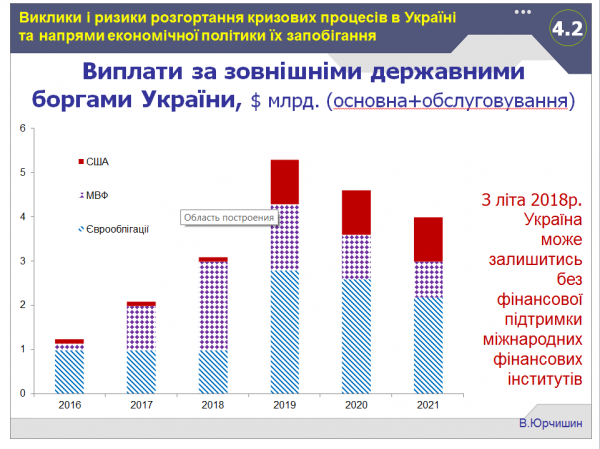
– According to the Ministry, export of Ukraine in I quarter of 2017 increased by 28%. The EU accounts for 38.4 per cent. Can we say that the Ukrainian enterprises and the business has adapted to European standards?
– I believe that in this respect it is fairly positive. Europe just forces us to be more civilized, more competitive. And positive is the fact that Ukrainian business is ready to respond to these challenges of competitiveness on the fact that in the beginning of the process have been called into question. When the Association Agreement was prepared, and this went on for years, rules that were laid there, consistent with Ukrainian businessmen. Wasn’t that on top of something, and then the business was put before the fact. They also signed documents, conducted a serious analysis, analytical work. There were a lot of requirements for implementation of certain technical, environmental regulations on products, to enable it to enter the European market. This transition period lasted several years, and now continues with the Ukrainian business brings their products into line with European standards, to enter the market.
“What is called the loss of the Russian market actually started a long time ago”
But some experts and politicians continue to repeat that only one European market we will block the loss of traditional markets, primarily Russian.
– The question is not what we can/can’t block – the question of competitiveness. Today in the global world, if you are uncompetitive, you’ll still lose on the Russian market. When we say “Russian market” we still have in mind some historical ties from the Soviet era. But since then much has changed. In Russia also have their own businesses. If they are anything like ours, they don’t want us to go to them and will displace what happens. What is called the loss of the Russian market actually started a long time ago.
– You mean a trade war?
– Not that war. Local business, local politics just initiated the failure (of Ukrainian goods – Ed.) in favor of their own producers. For example, if pipe supplied from Ukraine, now Russia builds such a plant. In agriculture you see, Russia does not require Ukrainian imports, as it once was. That is, traditional products still have their own life cycle. If today it can be profitable to sell, then tomorrow these markets will be lost or disappear. So the trick is to be competitive and innovative. Innovation is finding new products, new production which can be sold on external markets. And it doesn’t have to be Russia, as the market. This may be a Europe that is already happening, the Asia, even the United States.
– And what about the quotas for Ukrainian exports is critical. We would maybe have put more, but Europe is protected by quotas from our products.
Is also some competition, including from the point of view of national interests, to provide jobs, to deal with their own unemployment. This policy can be understood. Who is going to work against themselves?
– You said that to overcome the crisis, nothing to invent, just to build on the strategy Europe 2020.
– Need to develop new industries that did not exist previously, innovation in the industry. When in 2008 the crisis began, former us President Barack Obama said, “Keys from the crisis are in University labs”. And here, Ukraine needs to make a breakthrough, we about it did not say. On whom can we rely? I will give the example of Europe. We go to Europe, there is the program Europe 2020, which exhibits three priorities, including to combat the crisis. The first priority of the so-called smart economy – innovation and knowledge economy. The second green economy and the third – economic growth for all, so that all citizens can enjoy the benefits of economic growth, social policy, poverty reduction, etc. We go to Europe, so you can just take the strategy Europe 2020 for the reference and put the same priorities. But putting these priorities, we should build policy. If we are the first number, write “innovation and knowledge”, then we should develop education, science, and not to turn it.
